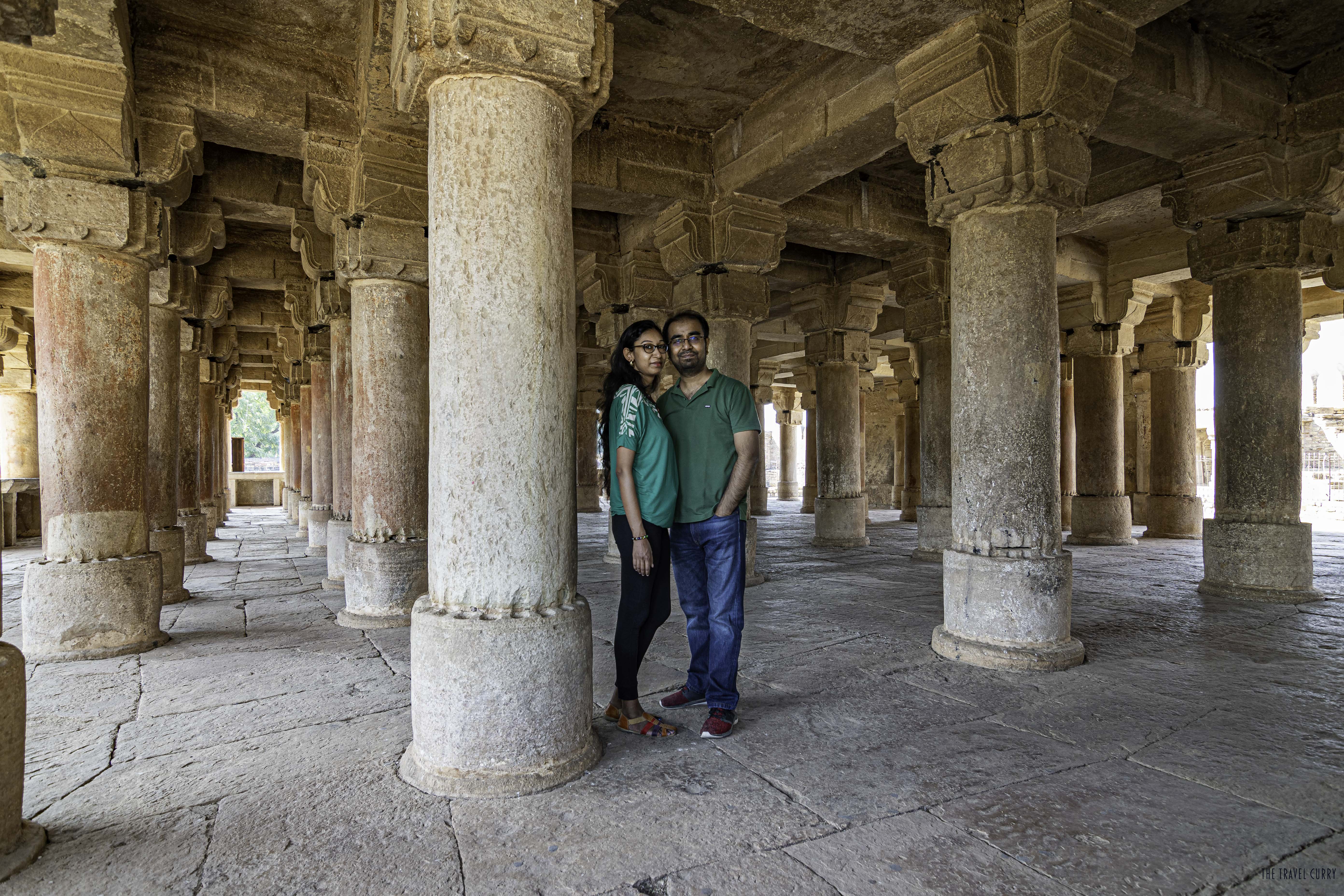
The historic city of Gwalior wears culturally rich and gallant stories on its sleeve. 310 km away from UNESCO world heritage site of Khajuraho, Gwalior has its own charm of a less chaotic, slow and relatively quieter lifestyle. Here is a handy guide with 5 must visit attractions of Gwalior.
1. Gwalior fort
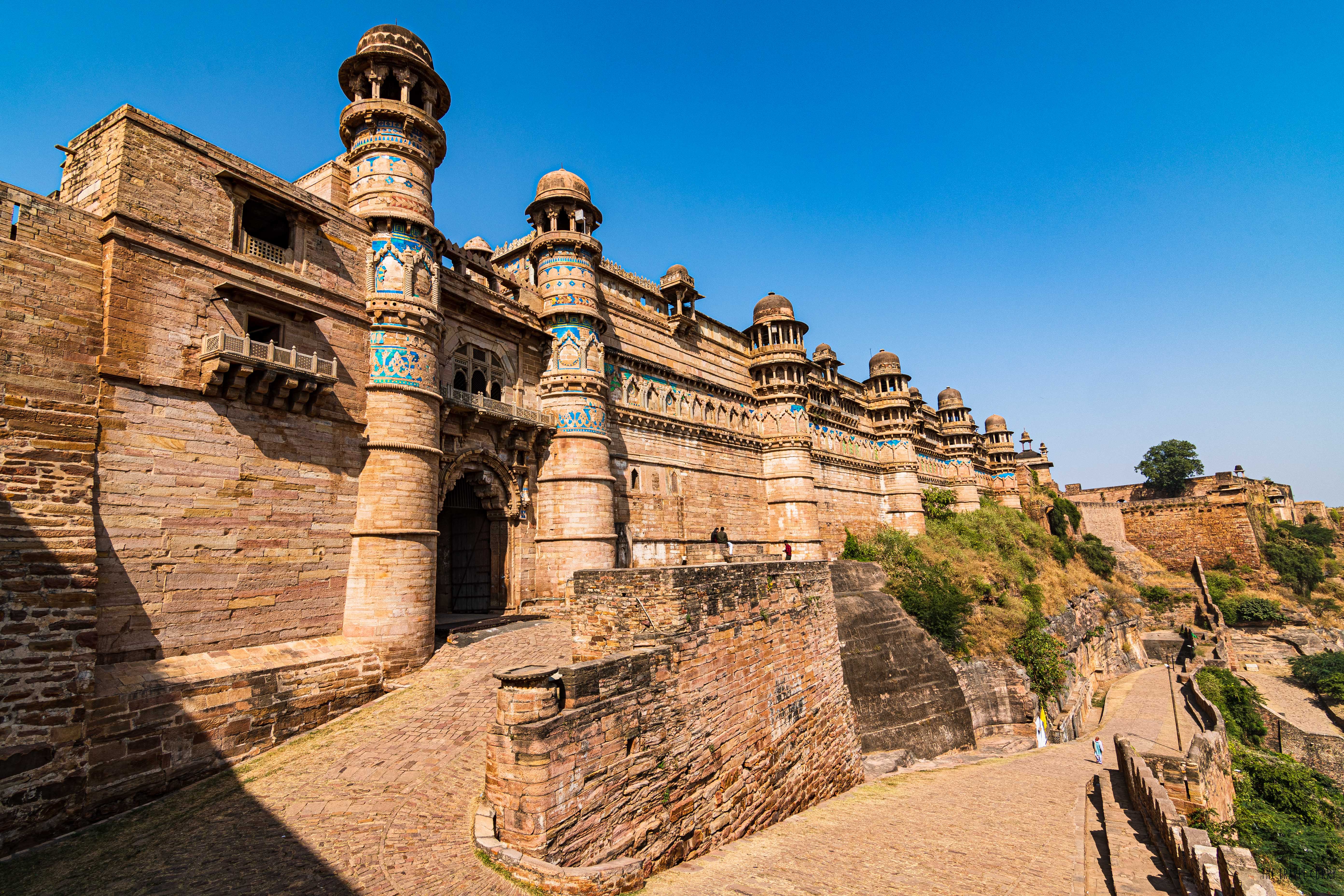
It takes most of your day to visit every place of this humungous fort and the main attraction of Gwalior. Be it the elaborate Man Singh palace, the scary jauhar kund or the beautiful Gurjari mahal, every structure narrates interesting pieces from history of the complex. It is advisable to start soon after the ticket window opens. You would love the architecture and history of the Gwalior fort. Moreover, your visit to Gwalior is not complete without visiting this iconic fort.
Additionally, the following blocks are also close to the fort complex which can be clubbed with the fort or visited independently.
Teli ka Mandir
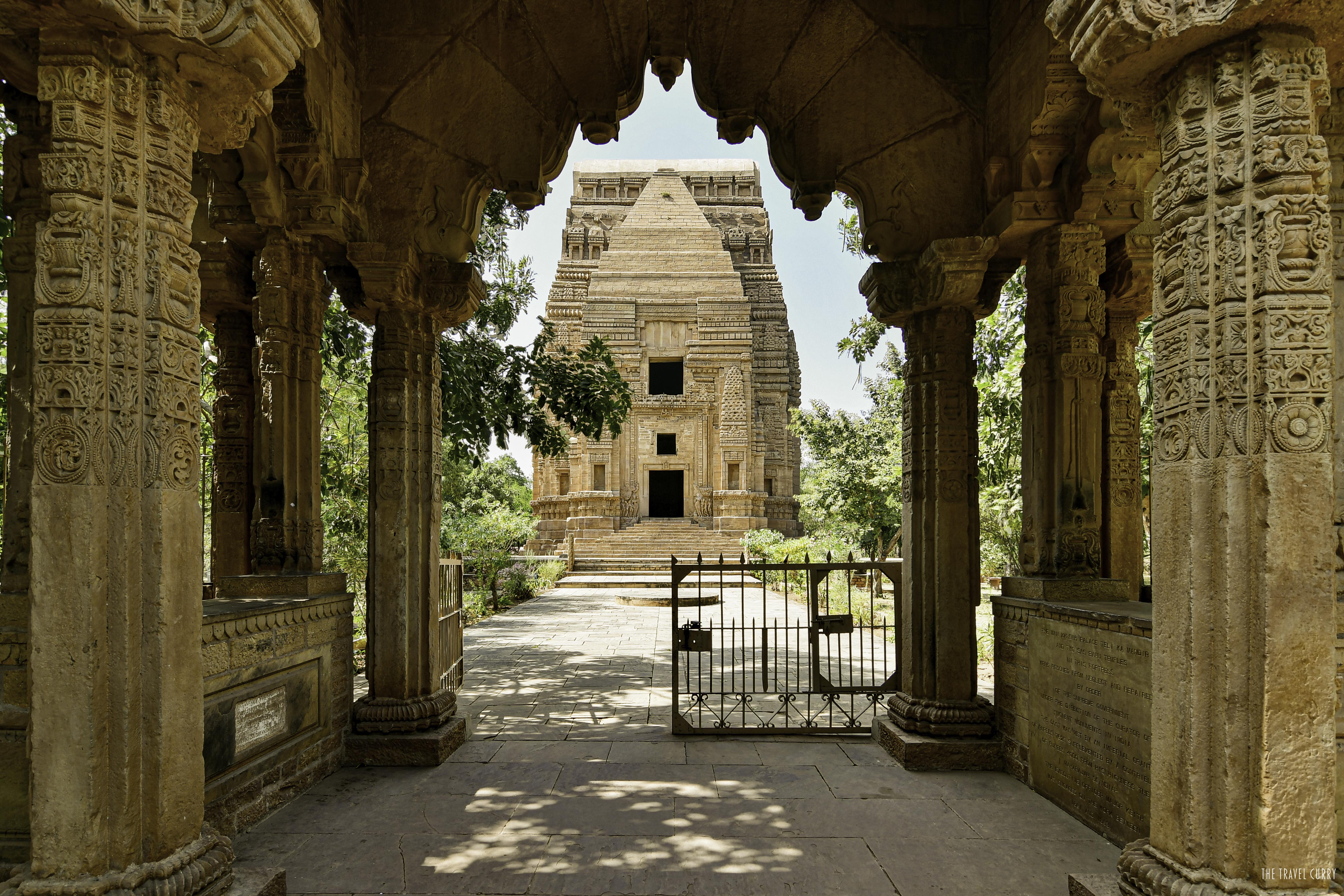
Constructed between the 8th and 9th century, Teli ka Mandir is an amalgam of Dravidian and the ancient Nagara style of architecture. What influenced the design of the temple is still a mystery. Unlike all Hindu temples’ square sanctum, Teli ka mandir has a rectangular sanctum. The main hall of the temple is dark and infested with bats. We hence we skipped it.
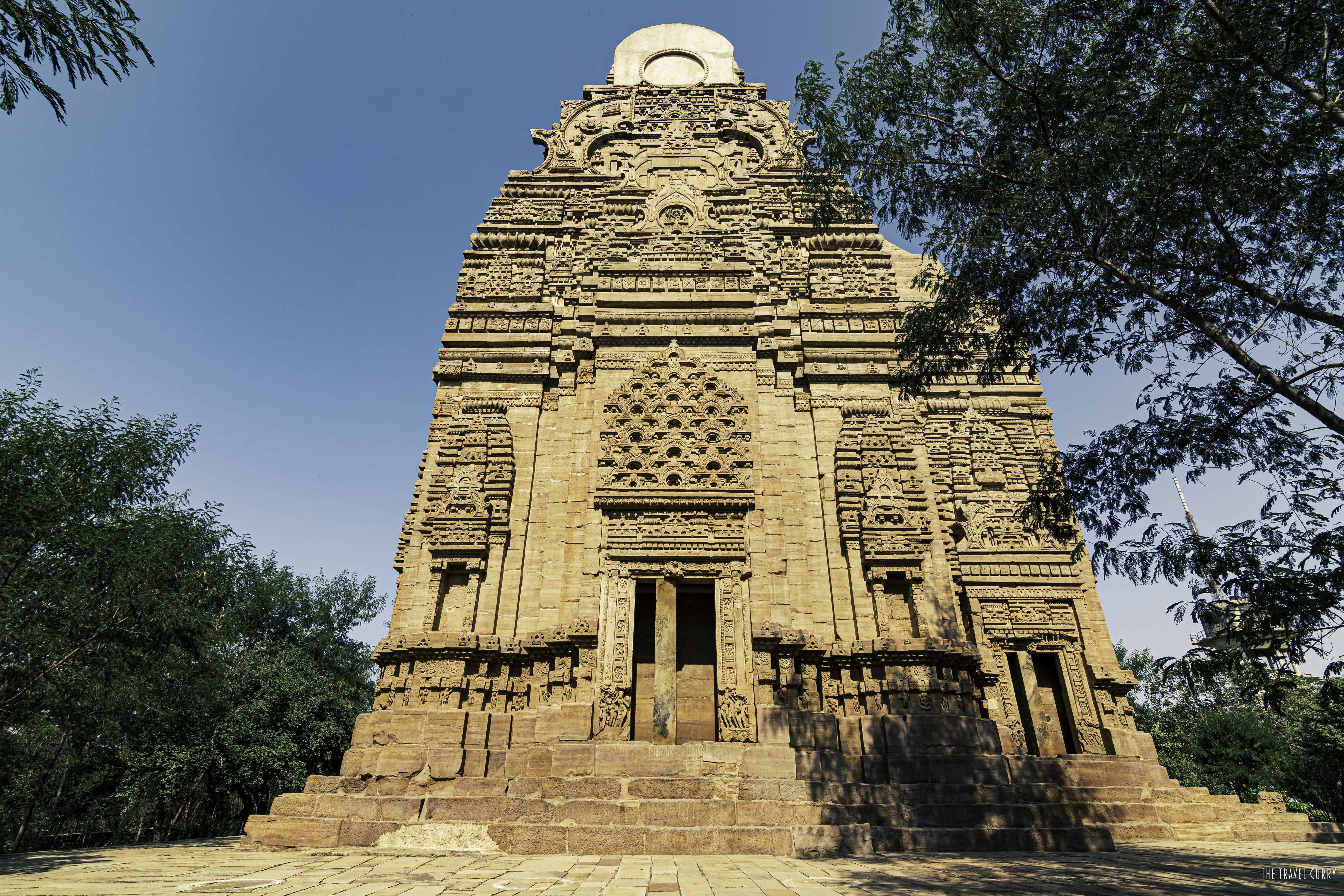
Entry fee– None. Photography allowed; no fee charged.
Timing– 8am to 6pm
Saas Bahu Temple
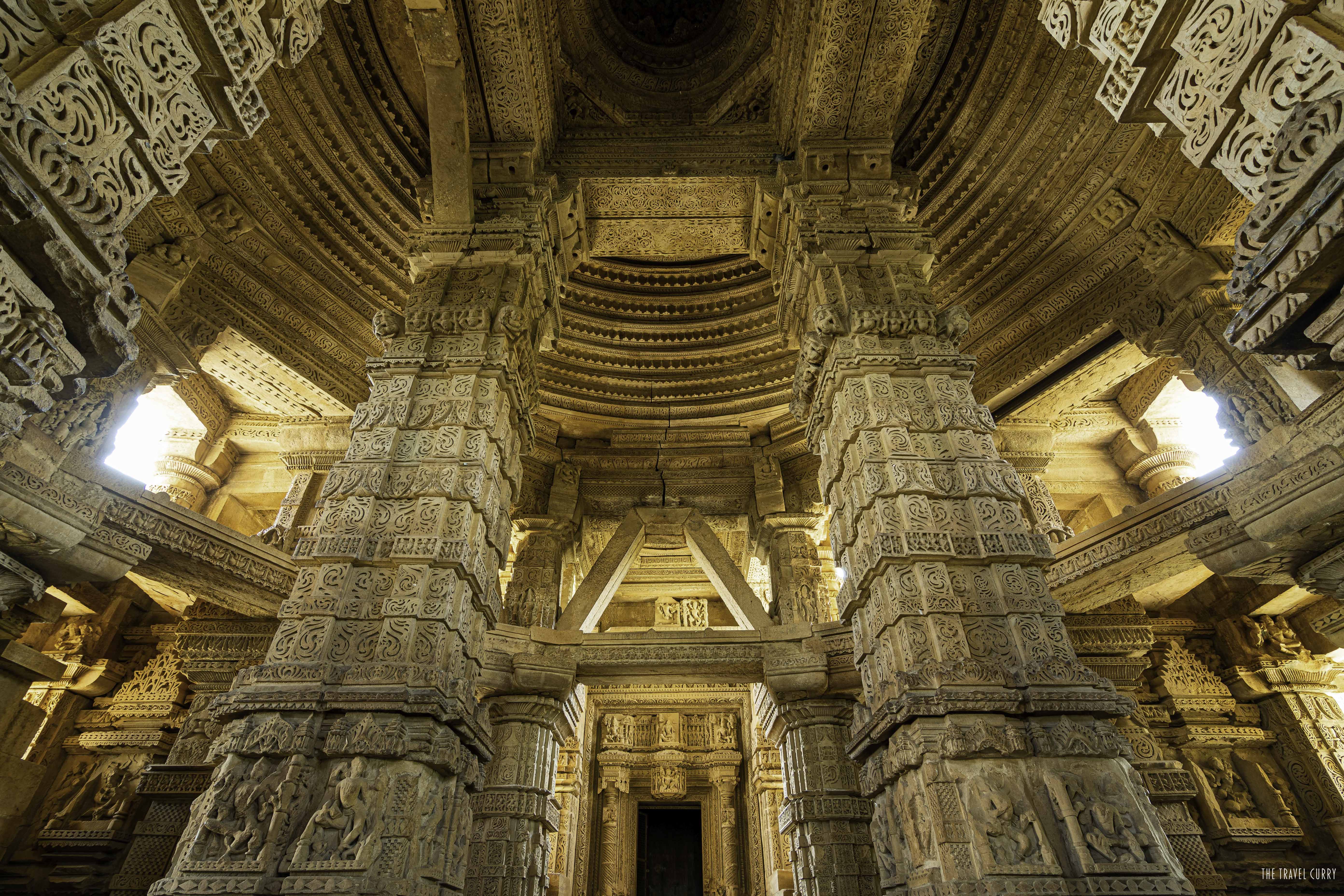
This 11th century twin temple is one of the most attractive structures within the Gwalior fort premises. The intricately carved pillars, etched ceilings and breathtaking sanctum indeed left us spellbound. Each stone weaves a lovely a story of the Rajput architecture and undoubtedly tops the list of must visit attractions of Gwalior.
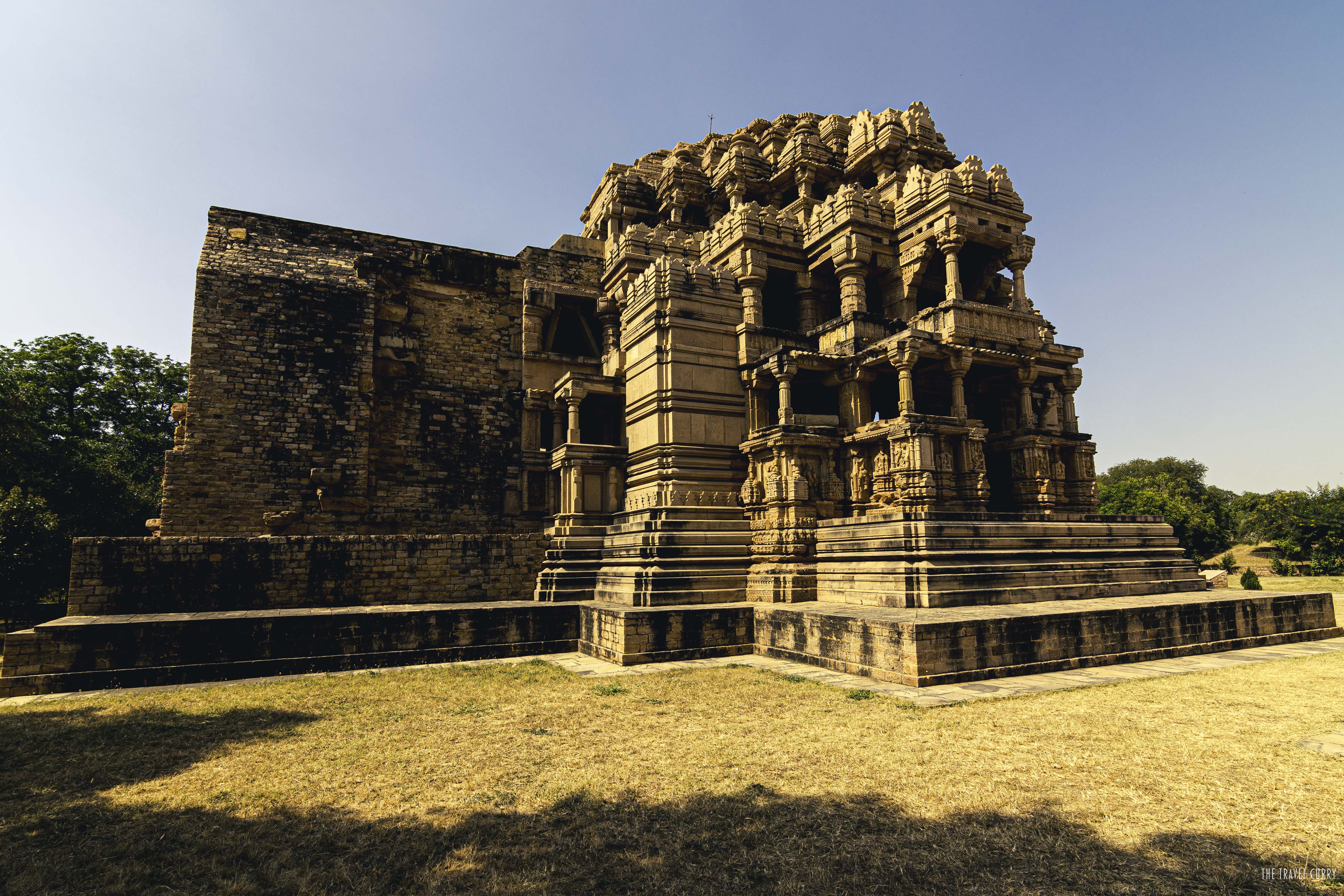
Entry fee– None (You should carry the Gwalior Fort entry ticket else Rs 15-20 is charged for the ticket price). Photography allowed; no fee charged.
Timing– 8am to 5pm
Gopachal Parvat
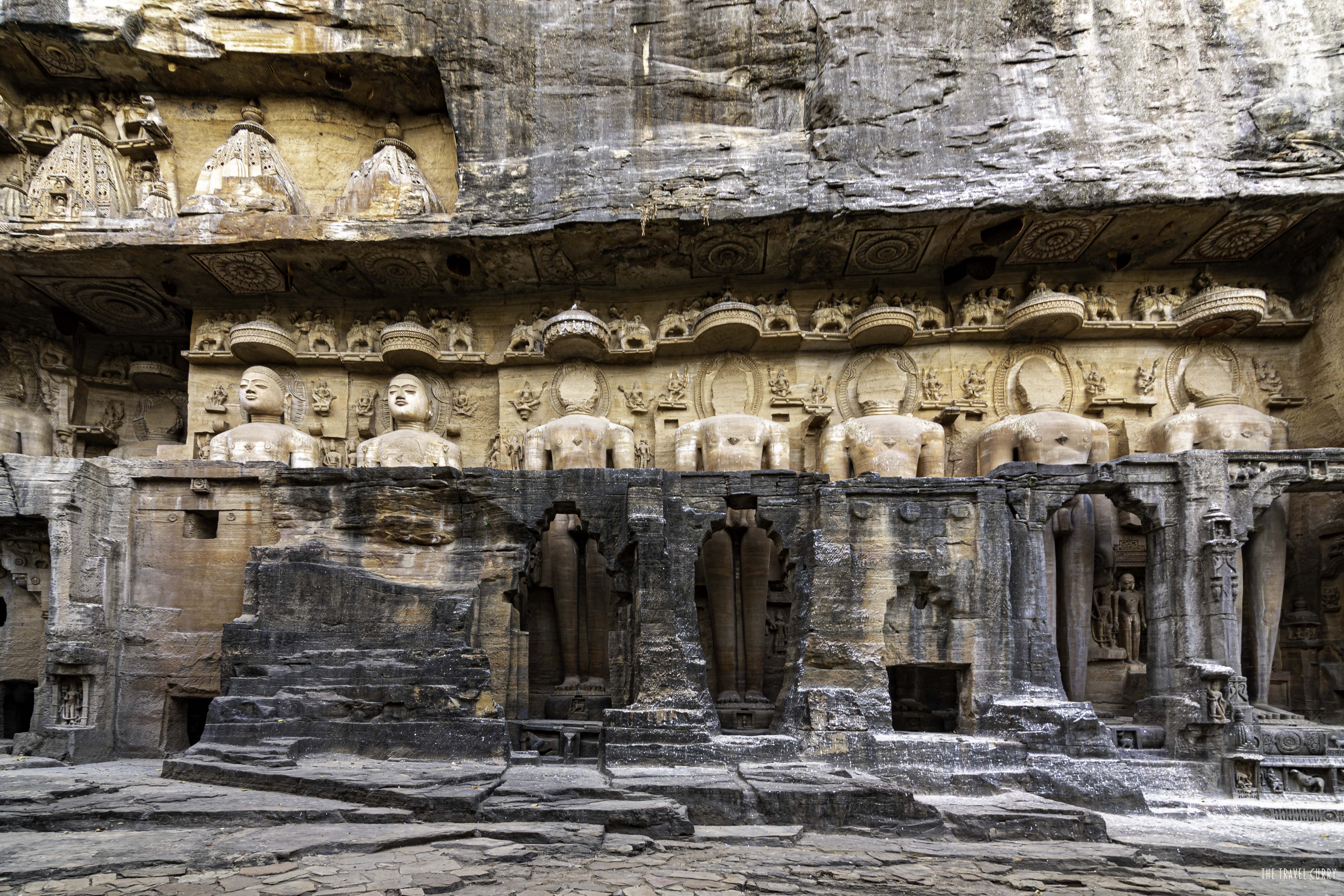
The eastern gate of the Gwalior fort restricts entry of vehicles. It is because this gate encloses the famous Jain Tirthankara statues and small temples, together known as Gopachal Parvat. The rock cut statues amid the quietude of nature are soothing.
Since its a holy site, you have to hike barefoot here. Leave your shoes at a counter outside the main gate. You can use a still camera to take pictures. However, mobile photography is strictly prohibited. Guards inside would guide you on the place’s history and interesting facts.

Entry fee– None. No fee for still cameras.
Timing– 6am to 7pm
2. Jai Vilas Palace
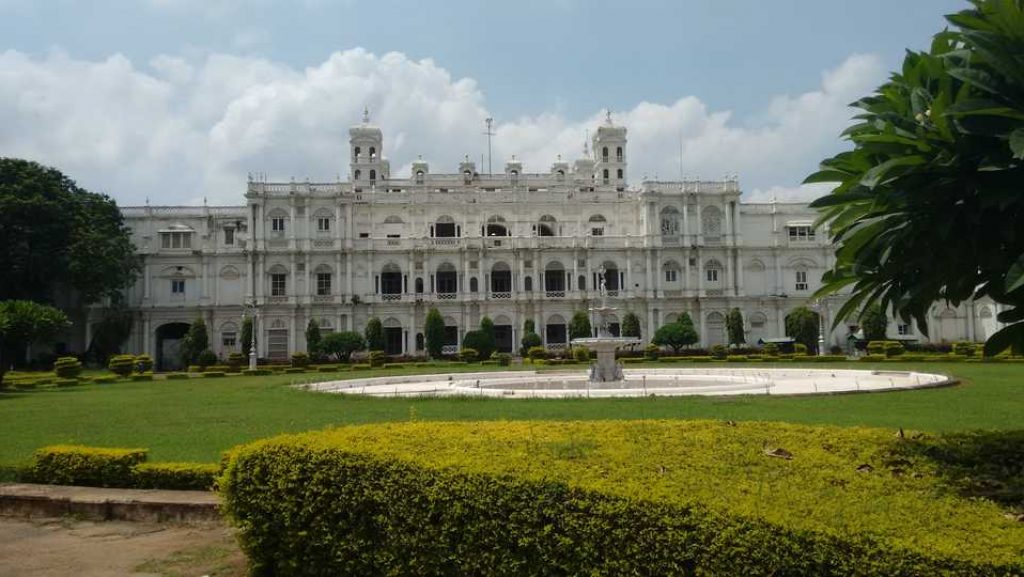
Also known as Jai Vilas Mahal, Jai Vilas Palace was constructed in 1874 by Jayajirao Scindia, the then maharaja of Gwalior. A part of his imperial residence was thereafter converted into a museum. Besides other artistic pieces, antique furniture, rare paintings & books, heavy draperies, grand chandeliers adore the royal palace. The opulent Jai Vilas Palace is undoubtedly among the best and must visit attractions in Gwalior.
However, this was shut due to pandemic restrictions in November 2020.
Entry fee: Rs 150 for Indians, Rs 800 for international tourists
Camera/mobile fee: Rs 100 each
3. Scindia ki Chhatri
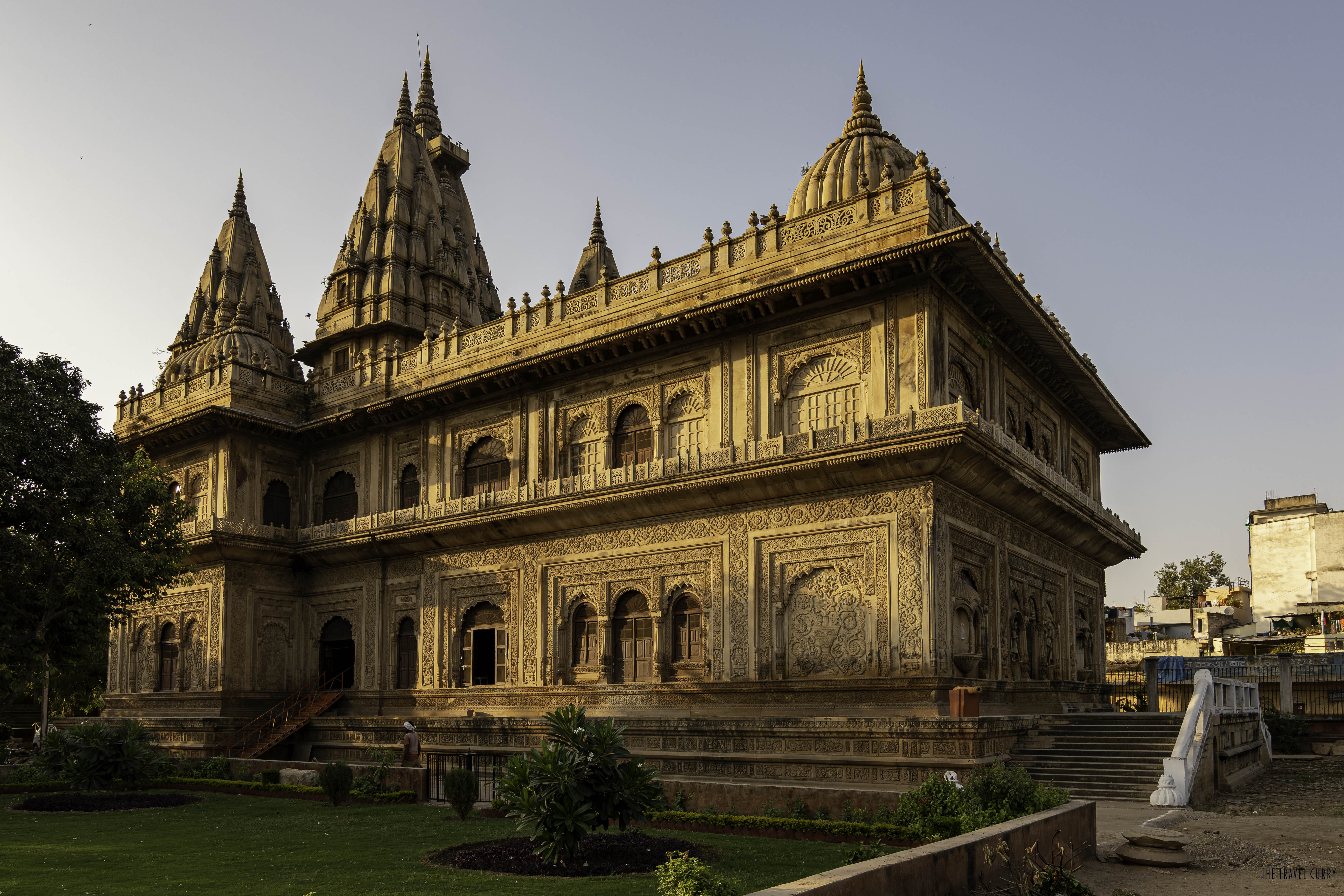
5 km away from the bus stop, the chhatris of the Scindia dynasty are a real gem of Gwalior. Set in the by lanes of the old part of the city in a blooming garden, the marble structures have remained timeless.
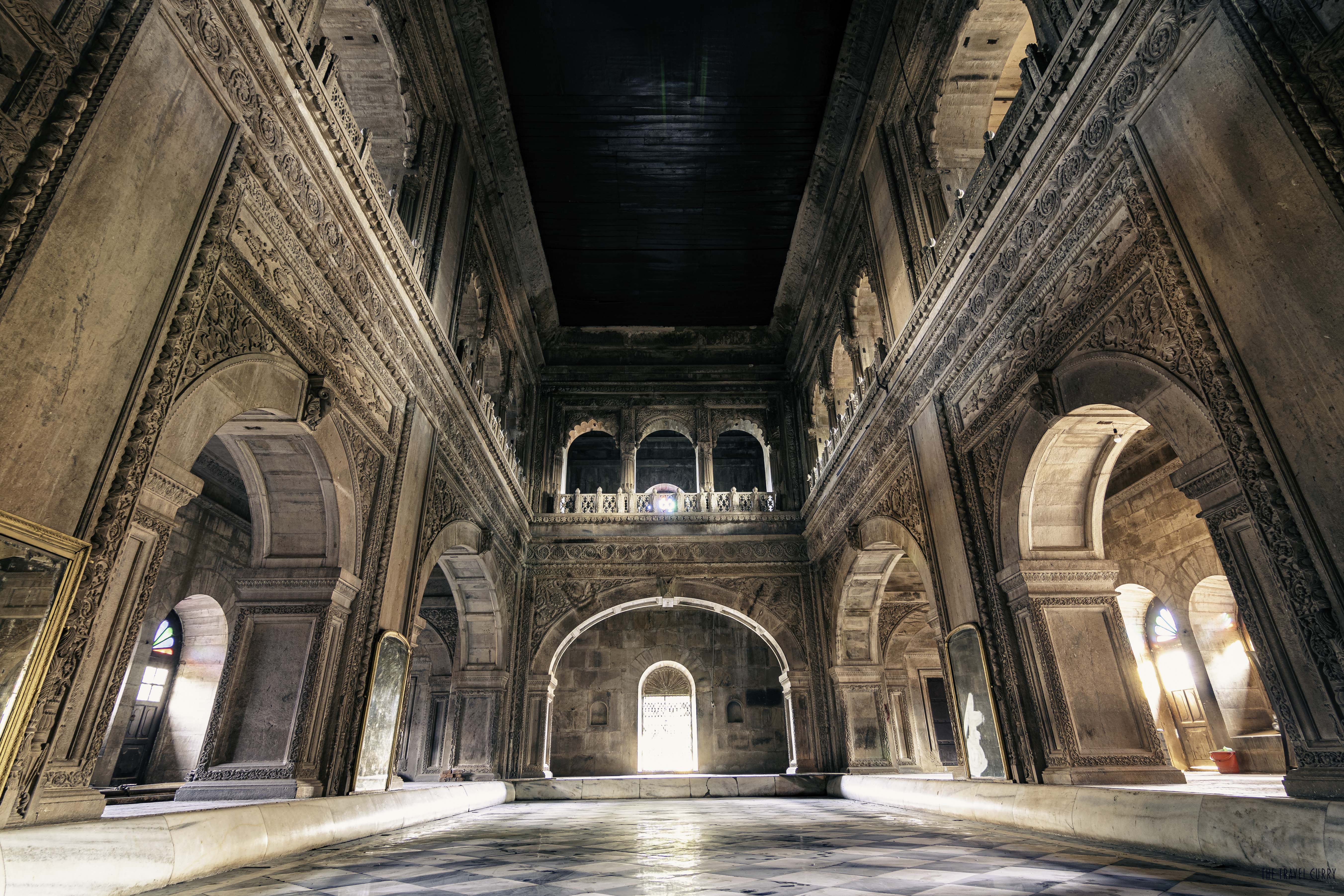

The oldest pavilion, recognized by yellow and pink sandstone, was constructed around 1817 C.E. Other chhatris were added later to the cluster. We couldn’t stop marveling the structures’ architectural brilliance. With huge statues of animals and portraits of kings, the chhatris also have community wells, temples and parks. Visit these cenotaphs for the detailed stone work and their history which is the foundation of Gwalior.
Entry fee: None
Timing– 9am to 5pm
4. Sun Temple
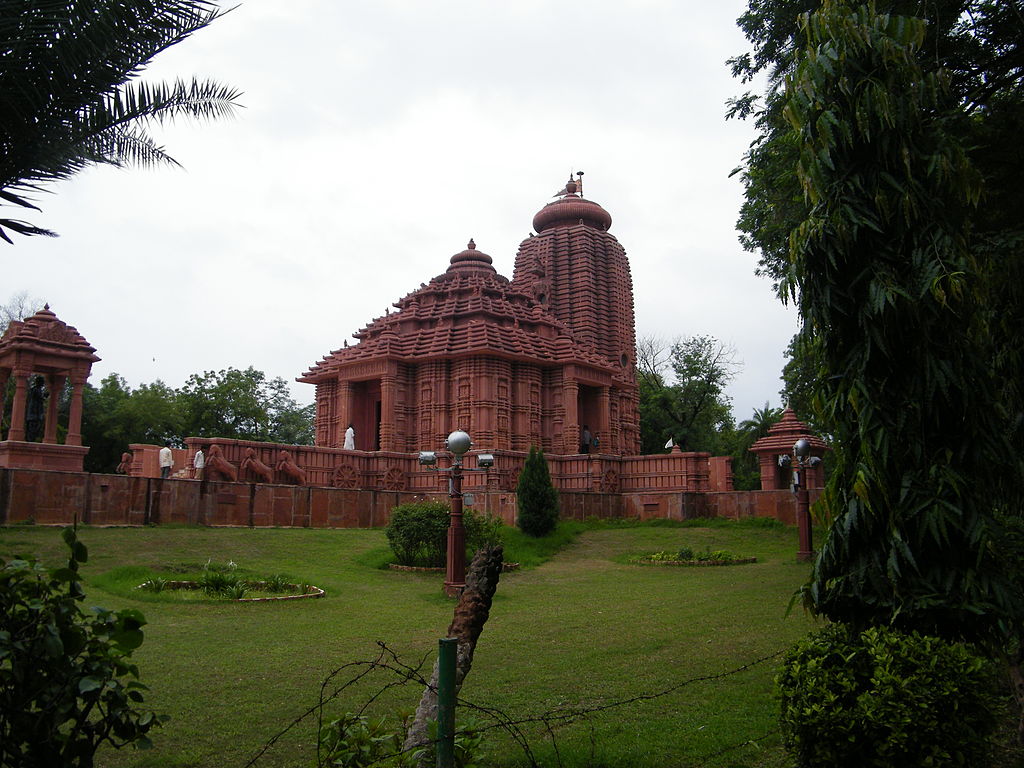
Do you know why were we super-excited to visit this temple? Well, because Gwalior’s Sun temple borrows its architectural inspiration from the renowned Sun temple of Konark. After all, the latter is a world heritage site! The credit unquestionably goes to industrialist Mr. G.D.Birla for the construction of Gwalior’s Sun temple. It attracts thousands of tourists every day though lesser than its counterpart in Konark. Carved in red sandstone, the temple looks drop dead beautiful against the lush green gardens. And that is the beauty of this place.
Entry is free of cost. Sun temple shut after the first wave of COVID-19 and will remain closed until further notice.
Timing: 10am to 4pm
5. Bateshwar, Padavali and Mitaoli
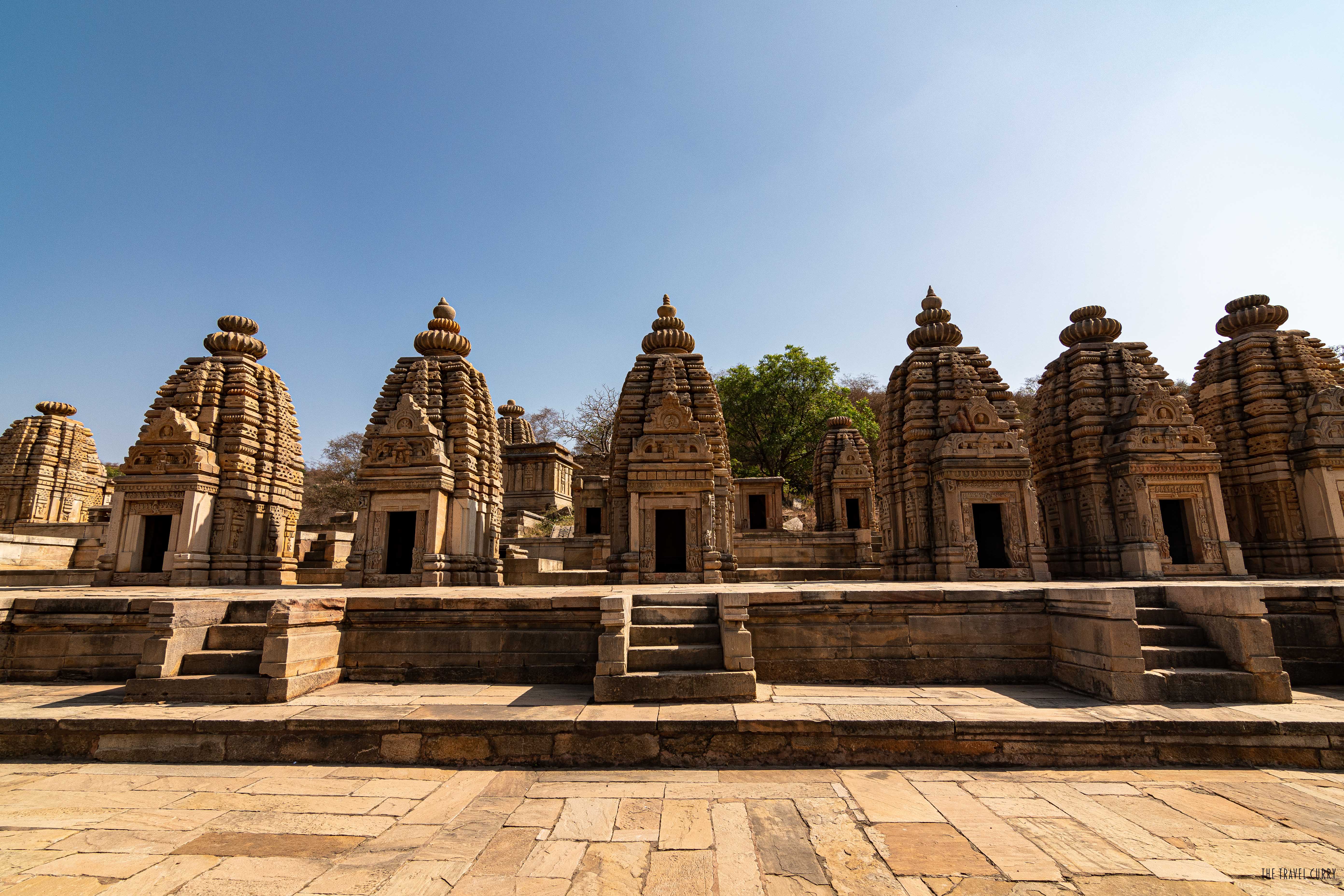
35 km from north of Gwalior, lies an ancient cluster of temples named Bateshwar. Dedicated to Vishnu, Shiva and Shakti, the temples perhaps derive their name from Bhuteswar, the largest shiva temple at this site. The construction dates back to the Gurjara-Pratihara dynasty rule and later ruins to the 13th century. Many years later, ASI took charge and declared it as a protected site. Eventually, the temples were reconstructed to boost tourism in the area.
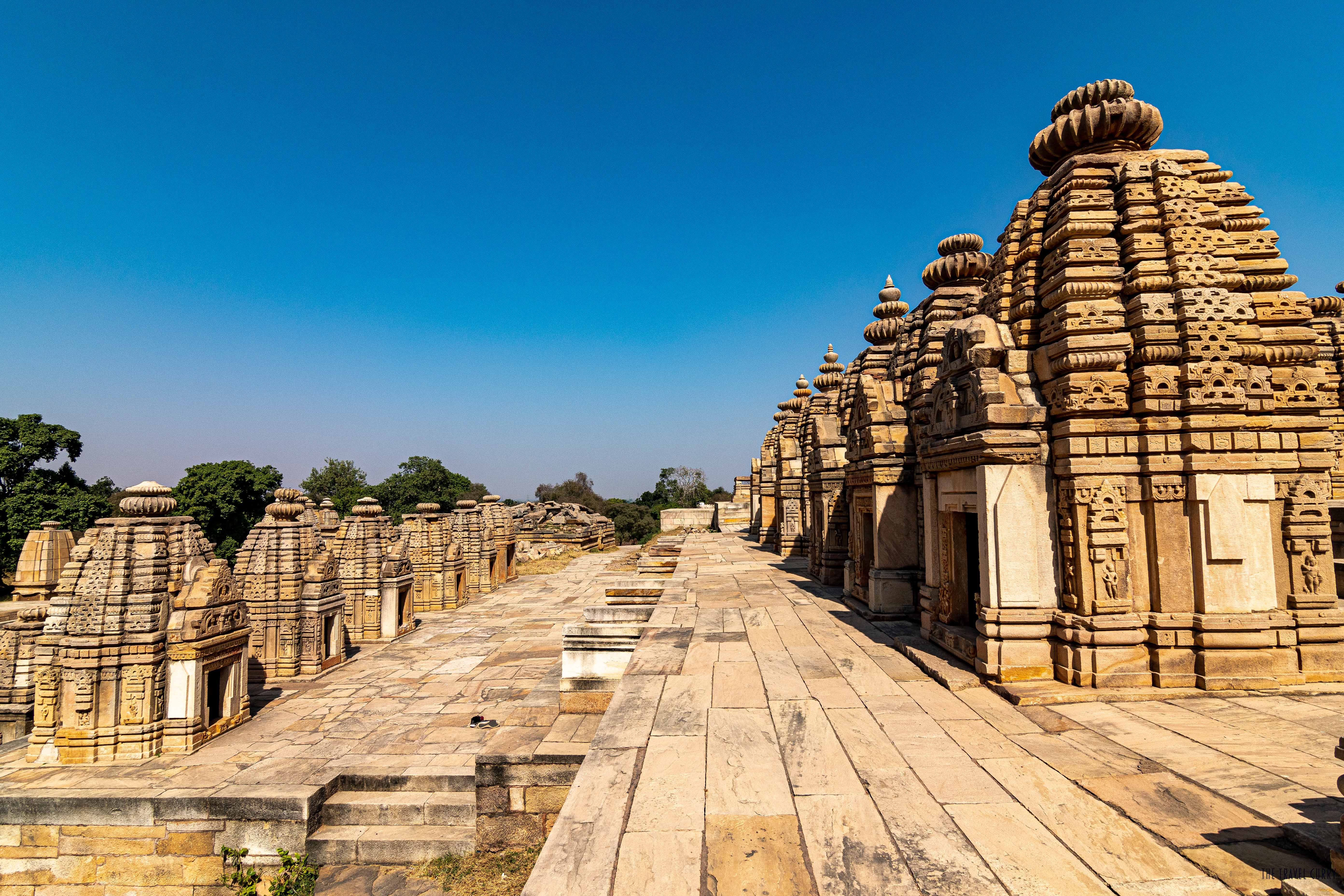
We made it through the broken, dug-up roads to Bateshwar as a massive road construction project was underway. What takes 30 minutes took us two hours. Therefore, we could not visit the temple ruins of Padavali or Mitaoli. We, however, made it to Mitaoli temple three years later.
Entry fee- None
Timing– Morning to evening. (Do not visit post 5pm as these are located in an isolated area, away from the city)
In a nutshell
The list of attractions in Gwalior is exhaustive. Henceforth, we’ve compiled the major and must visit ones for you in this post. You can also read our Khajuraho guide and explore the must visit temples. Hope you enjoy reading the piece. This trip of ours to Gwalior was in November 2020.

Superb! Loved this list of must visit places in Gwalior. Have been planning to visit Bateshwar since long. Could not.
Now you will 🙂 Thanks for reading.